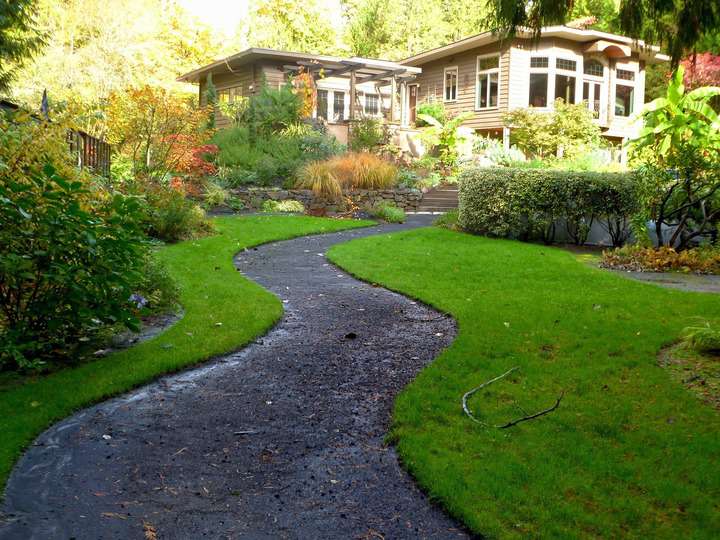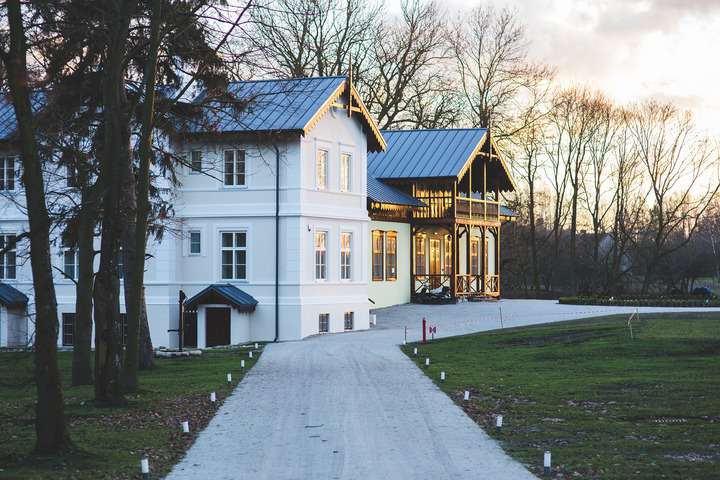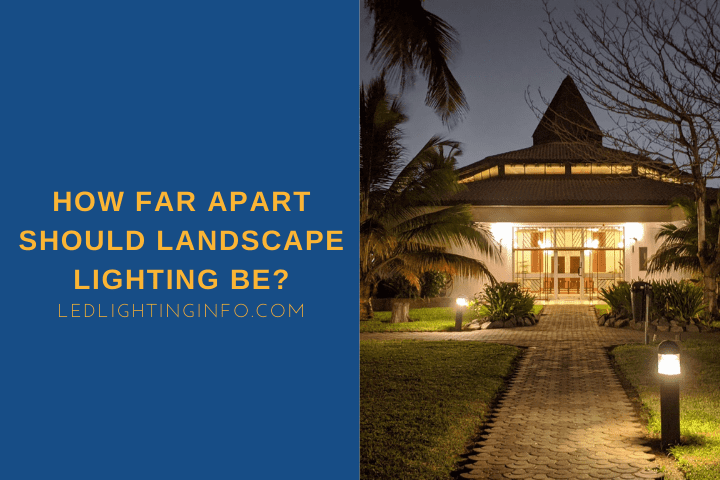Once you’ve settled on a landscape lighting project and decide which type of lights you’re going to use, the next thing you need to work out is how many lights you need.
And this will have a knock-on effect of then helping you determine how you’re going to wire the lights.
That’s because knowing the number of lights means you can work out how much power they’re going to consume.
To work out how many you need, you need to understand how far apart you need to space your lights to get your desired lighting effect.
There’s no hard and fast rule on the distance between landscape lights. It will depend on how bright your lights are and how much you want to light the space. For ambient lighting, err on the side of less light, as it’s more relaxing. Pavement and security lighting needs to be spaced to illuminate the space without gaps.
To help, let’s dive a little deeper into:
- The factors in determining how to space landscape lights
- How to space out path lights
What Determines The Space Between Landscape Lights?

How Bright Do You Want An Area To Be?
Before you can make any decisions about how far apart to space your lights, you need to decide what kind of lighting effect you’re aiming for.
That’ll vary for everyone.
Do you just want a little bit of atmosphere lighting, where you can relax and enjoy the warmth of a summer’s evening?
Or are you looking to illuminate specific parts of your garden to best show them off?
Maybe you’re using lighting to mark out hazards. In that case, you’ll want something brighter to make sure that you can clearly see any steps or path edges.
Once you’ve decided on the brightness you want, you can start looking at the lights that will achieve that.
Size and Lumen Output Per Light

The size and lumen output of the lights you want to buy will have the biggest impact on how many you need and how far apart they are.
Lumen output (sometimes called light output) is different from lumens.
The lumens are the bulb’s brightness, but the lumen output is given as a percentage, and it’s how much luminosity is given off by a particular light fixture.
Say, for example, you buy a light that’s advertised at 400 lumens, with a light output of 80%.
That means you’re only getting the visible benefit of 320 lumens, with the remaining 20% being absorbed by the fixture.
This means you need to look at the fixtures you’re buying and their lumen output, and if it’s a low percentage, then consider spacing them closer together to give you better coverage.
You can usually find this information on the packaging or in the product description if buying online.
There’s no exact science because every different light will have a different luminosity, and the form factor of the light will impact how much distance the light then shines.
If it’s a single beam, then it’ll light up a further distance than a wider, all-around stake light that’s dispersing its light in all directions.
It’s the same as the size.
A larger light might look less attractive, but it’ll spread the light further than smaller ones, so you’ll need fewer to give you the same effect.
Budget
For many people, budget will be the critical factor in planning their lighting setup. You can only manage what you can reasonably afford.
If you’re installing your own lights, then the main issue will be the cost of the lights.
Bigger lights will be more expensive, but you won’t need as many since they can be spaced out further.
Smaller lights may be cheaper, but you’ll need more of them, so you need to budget to work out which is best for you.
If you’re hiring a professional, fewer, bigger lights will save you money because there’s less work involved.
They’ll likely charge you an hourly rate, and the fewer lights they have to wire into the circuit and install, it will be faster in theory.
As a rough guide, expect to pay between $200 and $500 for smaller landscape installations lighting up a patio or decked area, and up to a couple of thousand if you’re illuminating a small garden, including some feature lighting.
But within those boundaries, the fewer lights and smaller distance needed to wire them up, the cheaper the project will cost.
Related: How Much Landscape Lighting Do I Need?
How To Space Out Path Lights

Place the lights too close together, and it’ll look gaudy, like a fashion catwalk. Too far apart, and you’ll leave dark spots, which could conceal hazards.
Your paths are where you’ll be walking, so you want to see anything that could trip you up.
The distance between the lights depends on how bright they are, but a generally accepted distance that looks good is 6-8 feet apart.
For narrow paths less than 5 feet wide, you’ll only want lights along one edge; otherwise, it’ll be overkill.
Anything wider, and it looks better to have lights on both sides.
You could alternate the distance – say after 3-4 feet, you have a light on the left, then 3-4 feet later light on the right, and so on, which keeps the distance at 6-8 feet on each side.
But for wider paths, this will leave dark patches, and most people prefer the uniform look of lights opposite each other.
Also, consider leaving ample space between the end of the path lights and your home.
You don’t want the path lights to shine through a window, and if you’ve wall lighting in your home, you don’t need redundant path lights leading up to the door.
Finally, if you have steps in your pathway, ignore all the above.
You’ll want to instead position lights to avoid steps casting shadows, which means you’ll likely need them closer together.
Leave them far apart, and the shadows could mask the edge of the steps, creating a hazard when you’re walking.
Instead, position lights close to the vertical point of each step, which will illuminate where the edges are.
Also read: How To Dim Low Voltage Landscape Lights?
Final Words
With any kind of lighting, it’s difficult to give clearly defined recommendations because there’s so much individuality in creating a lighting setup.
Nobody is the same, and so what you want from your lights will be different from the next person to visit my website.
With landscape lighting, it’s even more varied because there are so many variances to garden styles, pathways, steps, ponds, and so much more.
But as long as you consider the three main factors – how bright you want it to be, the size and lumen output of your chosen lights, and your budget, you can come up with a solution that works for you.
Have you got a burning question about installing landscape lighting or some stories of your own on how you designed your own setup?

